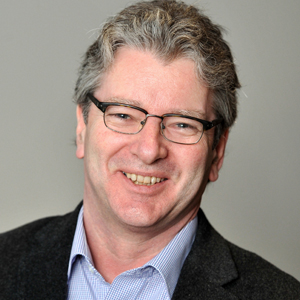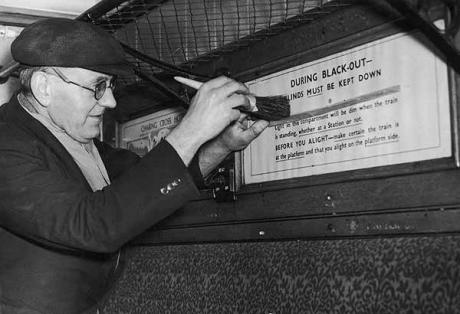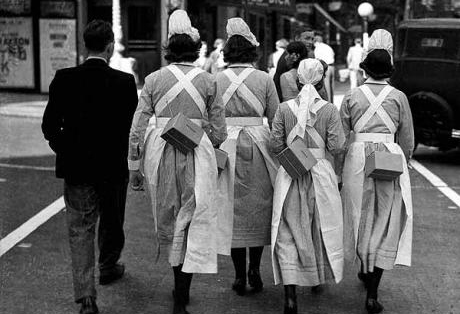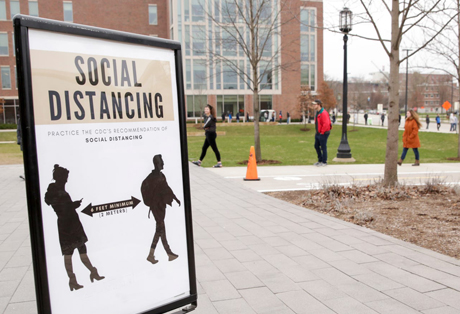
Professor Barry Doyle
Professor of Health History
...was invited to join a group of historians who assembled online to consider the parallels between the two crises in terms of policy making, social distancing and general morale
NEW figures show that the Covid-19 pandemic has claimed more victims than the Blitz during WWII. But are there valuable lessons to be learned from Britain’s response to the wartime bombing campaign?
A team of historians – including Barry Doyle, the University of Huddersfield’s Professor of Health History – has assembled online to find out.
There are parallels between the wartime blackout rules and the current social distancing and lockdown measures, and maintaining high morale in the NHS is vital, states the online article that has emerged from the virtual round-table discussion.
“Whether expressed in the form of rainbows or clapping, the Covid-19 emergency has demonstrated a groundswell of public support for the NHS and other key workers. Their morale is fundamental to the success of treatment and the continuation of essential services,” write the historians.
“To bolster this morale, the government would be well-advised to work with unions and professional bodies like the British Medical Association to draw up NHS and Care Charters making the case for better PPE, increased pay or a Covid-19 bonus to express the nation’s gratitude, and longer-term guarantees around funding and organisation.”
The historians were assembled remotely by Dr Henry Irving of Leeds Becket University and met under the aegis of History & Policy (H&P), a network of more than 500 academic historians who seek historical perspectives on contemporary issues.
Seven H&P members probed the experience of British civilians during WWII and have now issued a policy paper titled The real lessons of the Blitz for Covid-19.
They acknowledge that analogies between the current pandemic and the Blitz are not always helpful, because there are major differences between an armed conflict and a global pandemic.
But they add that “the reality of aerial bombing forced civilians to alter their daily routines and threw them into the ‘frontline’ of the conflict. We can learn from both what worked and the challenges that were faced during this time”.
The policy paper argues that the wartime blackout provides the closest analogy to current social distancing.
“Its success demonstrates that the government needs to communicate clearly the link between people’s behaviour and the national interest, using sanctions consistently,” state the historians.
They note that volunteers were mobilised in large numbers during WWII, but were often poorly co-ordinated and equipped. The lesson is that “current schemes need to foster local networks and communication between volunteers, while existing pools of labour should be redeployed to essential tasks.”
Also, local authorities carried many of the burdens of ARP and post-raid services, during the war, but were not given adequate funding to fulfill them consistently. Today’s government must avoid this mistake, states the H&P paper.
Professor Doyle’s contribution focused on the Emergency Hospital Service – a subject on which he has blogged. This was an initiative designed to free up hospital beds and make new provision available. But like the situation today, demand was not as extensive as expected, with complaints that beds were kept empty unnecessarily, with patients left untreated.
Another key conclusion is that “the fire service was completely re-organised when its role on the frontline became apparent – today’s crisis is already showing signs of flexible thinking, but we argue that this needs to go further and must involve representative bodies.”
The policy paper includes intriguing aspects of Britain’s response to the Blitz – which actually resulted in far fewer fatalities than pre-war planners had anticipated. For example, the observance of strict blackout rules was sometimes undermined by inconsistent or over-zealous interpretations of the law, which has also caused dissatisfaction in the present crisis.
Unlike the WWII lighting restrictions, a campaign to encourage people to wear white during the blackout – to cut down on traffic accidents – was a failure.
“Opinion polls found that people remained unconvinced of its merits and did not want to look conspicuously cautious. The freedom to put oneself at risk was viewed differently from the need to protect one’s neighbourhood and the nation and (without the force of legislation) was one that most were willing to take,” write the historians.
“This suggests that when existing social distancing measures are revised, the links between people’s behaviour and the local or national interest needs to remain explicit, consistently communicated, and backed by sanctions where necessary.”
Britain began to introduce air raid precautions more than a year before WWII began, and civil defence measures were placed in the highly-effective hands of top civil servant Sir John Anderson, who launched a drive in a bid to secure some 1.8 million ARP workers and was responsible for the distribution of some 2.5 million ‘Anderson shelters’.
“But, while the UK entered the Covid-19 emergency less well prepared than it did the Second World War, it is not too late to implement the lessons,” argue the authors of the H&P paper, adding that “the need is for a coherent, cross-service approach in the style of Anderson, not Churchill. This should prioritise evolving medical understanding based on the experience of health professionals and epidemiologists and avoid political point-scoring.”
More Stories
Warning against malarial drugs as Covid-19 cures
Huddersfield pharmacists caution against the use of chloroquine and hydroxychloroquine as a prevention and cure for the virus
Social impacts of Covid-19 for young people
Huddersfield researchers Professor Barry Percy-Smith and Dr Leanne Monchuk will be working with international research organisation Ecorys
Health staff suffering skin damage from face masks
Professor of Skin Integrity and Infection Prevention Karen Ousey suggests remedies for healthcare staff and the general public



